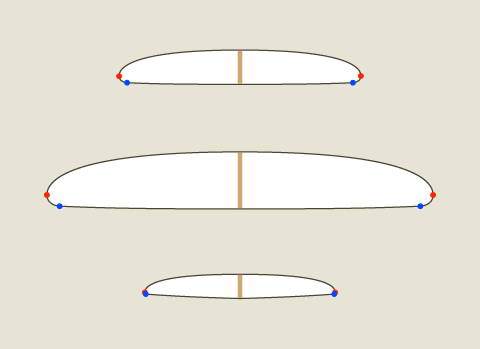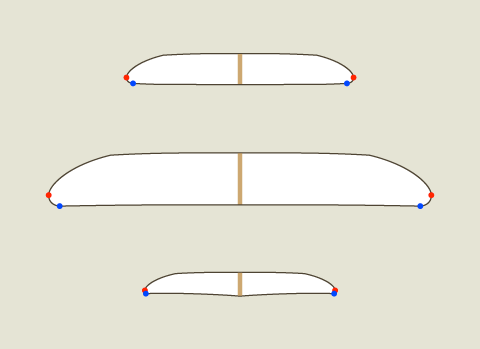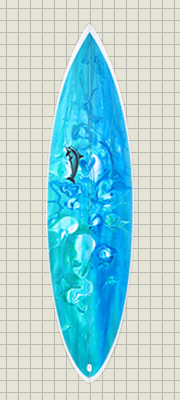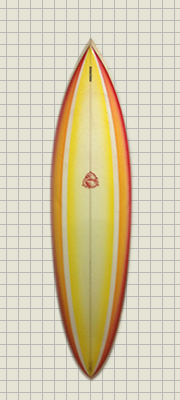|
RETRO SINGLE FIN RAIL PROFILE & BOTTOM CONTOURS OPTIONS
|
|
|
|
CROWNED DECK and RAIL and TRI PLANE to PANEL VEE BOTTOM Crowned rail
profile for control. Tri plane entry and wide point to panel vee widepoint to
tail for absolute minimum drag offering acceleration, projection, speed, and
maneuverability. The tri plane entry and wide point to panel vee widepoint to
tail is the optimum convex bottom. Crowned deck transitions from rail to rail
with ease. Convex bottom contours were common to most early shortboard designs
prior to the introduction of flat decks. |
|

|
|
|
|
CROWNED DECK and RAIL and SINGLE to DOUBLE CONCAVE Crowned rail profile for
control and single to double concave for acceleration, projection, speed, and
maneuverability. The way water flows from the rail the peak of the double
concave at the stringer (center of the board) creates additional lift and with
it's spine offers directional stability through turns. Single and single to
double concave bottom contours evolved into shortboard designs in the early 80s
and became the primary bottom contour designs by the 90s and remains so to this
day. |
|

|
|
FLAT DECK and DOWN RAIL and TRI PLANE to PANEL VEE BOTTOM Down rail profile
for critical control. Tri plane entry and wide point to panel vee widepoint to
tail for absolute minimum drag offering acceleration, projection, speed, and
maneuverability. The tri plane entry and wide point to panel vee widepoint to
tail is the optimum convex bottom. Flat deck provides extra volume and
stability. The flat deck down rail design feature was equally common as the
crowned deck design in 70s during the early stages of shortboard revolution and
well into the late 80s. The deck and rail design remains relevant to this day
in many classes of surfboards. |
|

|
|
|
|
FLAT DECK and DOWN RAIL and SINGLE to DOUBLE CONCAVE Down rail profile for
critical control. Tri plane entry and wide point to subtle and very shallow
single to double concave widepoint to tail offers offers exceptional
acceleration, projection, and speed. The spine of the double concave functions
like a vee offering predictable directional stability. Flat deck provides extra
volume and stability. The flat deck down rail design feature was equally
common as the crowned deck design in 70s during the early stages of shortboard
revolution and well into the late 80s. The deck and rail design remains
relevant to this day in many classes of surfboards. |
|

|










